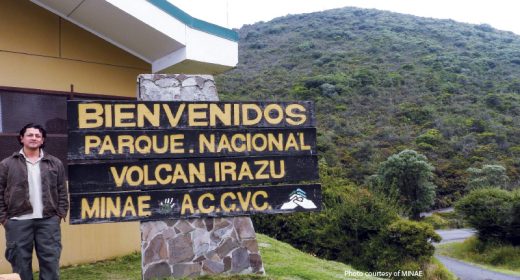
Building CR – Roofing 101: Guanacaste Style
- SEP 04, 2017Warning: count(): Parameter must be an array or an object that implements Countable in /home/howlermag/public_html/old/wp-content/themes/new-paper/includes/general.php on line 193

Your Lead Paragrpah goes here
…the sound of rain simulates living under a waterfall — it’s really that loud.Costa Rican rooftops are under constant assault by climate and creature forces. Hot, sunny and very windy conditions for six months of the year subject our roofs to extended UV exposure and wind damage. Wet, windy and stormy conditions during the other half of the year cause metal to corrode and loose materials to flap around. And living in a tropical jungle means bats, birds, bees, bugs and even iguanas will be seeking overhead passageways to take up residence in our roofs and ceilings.
Let’s review some common roofing materials available here by comparing advantages, disadvantages, cost and lifespan.
Galvanized metal, also known simply as “zinc,” is the cheapest roofing option. Simplicity and affordability find it widely used in Tico housing, as well as other budget-conscious construction projects. Being lightweight, long-lasting and paintable in any color makes zinc a solid, albeit plain, roofing option. The downside is the sound of rain simulates living under a waterfall — it’s really that loud. Unless this material is painted every couple of years, rust will limit its usable life to a decade or less. A zinc roof gets very hot, so use thermal insulation to keep the home’s interior cooler.
Plastic tile — “teja plástica” in Spanish — is a roofing material I avoid due to the degradation caused by prolonged UV exposure. This limits the lifespan to between 10 and 15 years. Builders who do use plastic tile are strongly advised to install sheet metal roofing underneath, as UV damage causes the plastic to crack and leak over time. (Given this extra metal installation cost, it makes more sense to simply install a more UV-resistant metal roof shaped like clay.) Plastic tile has the advantage of dampening rain noise, but to a lesser extent than clay tile. Unless composed of recycled materials, which is seldom the case, plastic is not a “green” roofing option.
“Tile-style” metal, also known as “zinc teja,” is a fairly common roofing material on newer homes. It’s more affordable than clay tile and has an attractive appearance. The “baked-on” paint is durable and comes in various sizes and colors, including red, green and orange. Life expectancy is more than 20 years if the roof is properly maintained. Thermal insulation is recommended because the metal and dark colors make the roof burning hot when it’s sunny.
Clay tile, or “teja de barro,” is the most widely used material on American-style homes built here. Entire neighborhoods and gated communities incorporate Mediterranean, Spanish and colonial-style architecture with this type of roofing material. On the plus side, the insulating properties keep homes cooler and the rain noise down. Deterrents to using clay tile include its heavy weight, requiring a bigger and stronger roofing structure. And again, UV deterioration limits the lifespan and adds to the expense. Metal roofing must be used under the clay tiles because they start to break down and become brittle after about 10 to 15 years. This also limits one’s ability to walk on the roof.
Pre-painted sheet metal roofing is similar to zinc, but normally has square channels instead of round, lending a different look and feel. This material comes in various colors, including gray, white, red, green and orange. It can even be ordered in exact lengths so there is no need to cut and join the laminates. Make sure to install thermal insulation below the metal sheets, which get very hot.
DECRA “stone-coated steel” is the roofing material I would recommend above all others. The cost of this new type of interlocking metal laminate is not much higher than the other pricier options (asphalt shingles and clay tile). The builder’s bonus is spending less on the roof structure itself. DECRA’s lightweight composition means money can be saved on beam and rafter construction. It’s also guaranteed for 50 plus years. DECRA comes in a dozen different colors and a variety of styles including shingle, slate, tile and shake. If you are looking for the best roof on the market in Costa Rica right now, this is it by far.
Asphalt shingles, a major roofing product in the United States and Canada, is also available in Costa Rica. Its use here is relatively limited, normally on Balinese/Hawaiian/tropical-style homes. Green, gray, black, blue and brown round out the color selection. The light weight of asphalt shingles is a big advantage in saving money on the roof structure. Downsides include the UV factor; shingles become brittle over time and eventually decompose. Also, the OSB (oriented strand board) installed underneath asphalt shingles is prone to mold and termite damage unless top-quality, specially treated laminates are used. The lifespan of asphalt shingle roofing is about 20 years.









